
How to Use Adafruit VEML6075 UV Sensor Breakout: Examples, Pinouts, and Specs
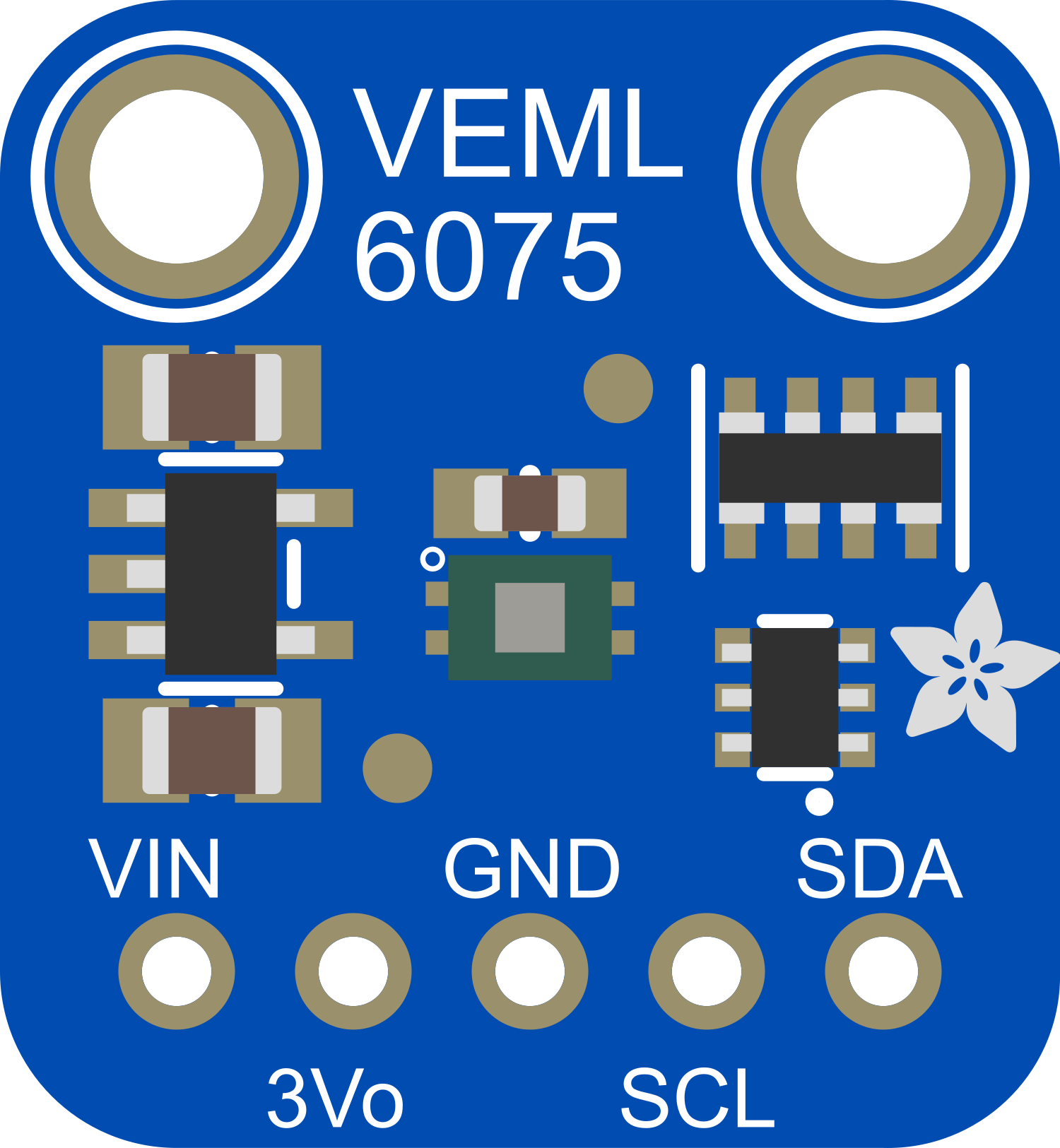
 Design with Adafruit VEML6075 UV Sensor Breakout in Cirkit Designer
Design with Adafruit VEML6075 UV Sensor Breakout in Cirkit DesignerIntroduction
The Adafruit VEML6075 UV Sensor Breakout is a sophisticated sensor module designed to measure the intensity of ultraviolet (UV) light. This sensor is equipped with an integrated UV photodiode and ambient light sensor, which allows it to detect UVA and UVB light with high accuracy. The VEML6075 communicates with microcontrollers such as the Arduino UNO via the I2C interface, making it an excellent choice for a wide range of applications, including UV index monitoring, UV exposure measurement, and UV lamp intensity control.
Explore Projects Built with Adafruit VEML6075 UV Sensor Breakout
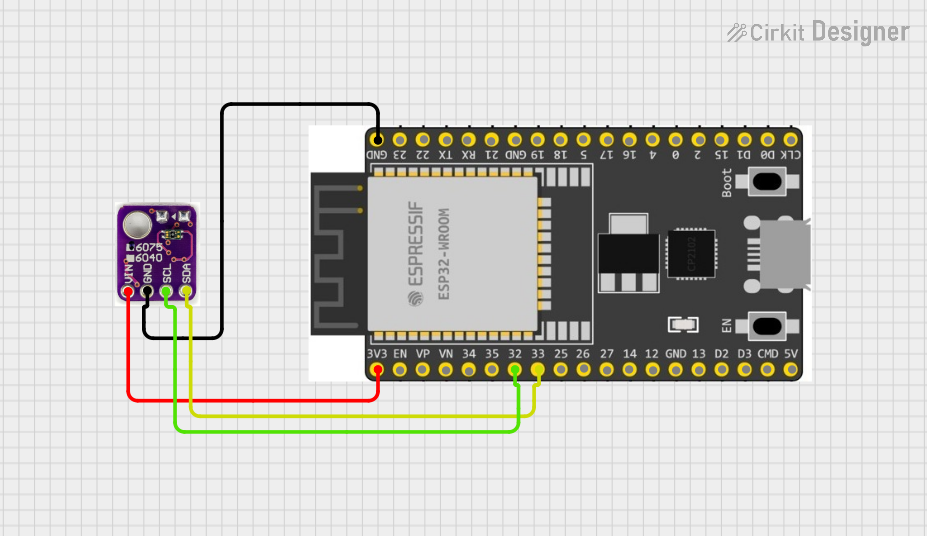
 Open Project in Cirkit Designer
Open Project in Cirkit Designer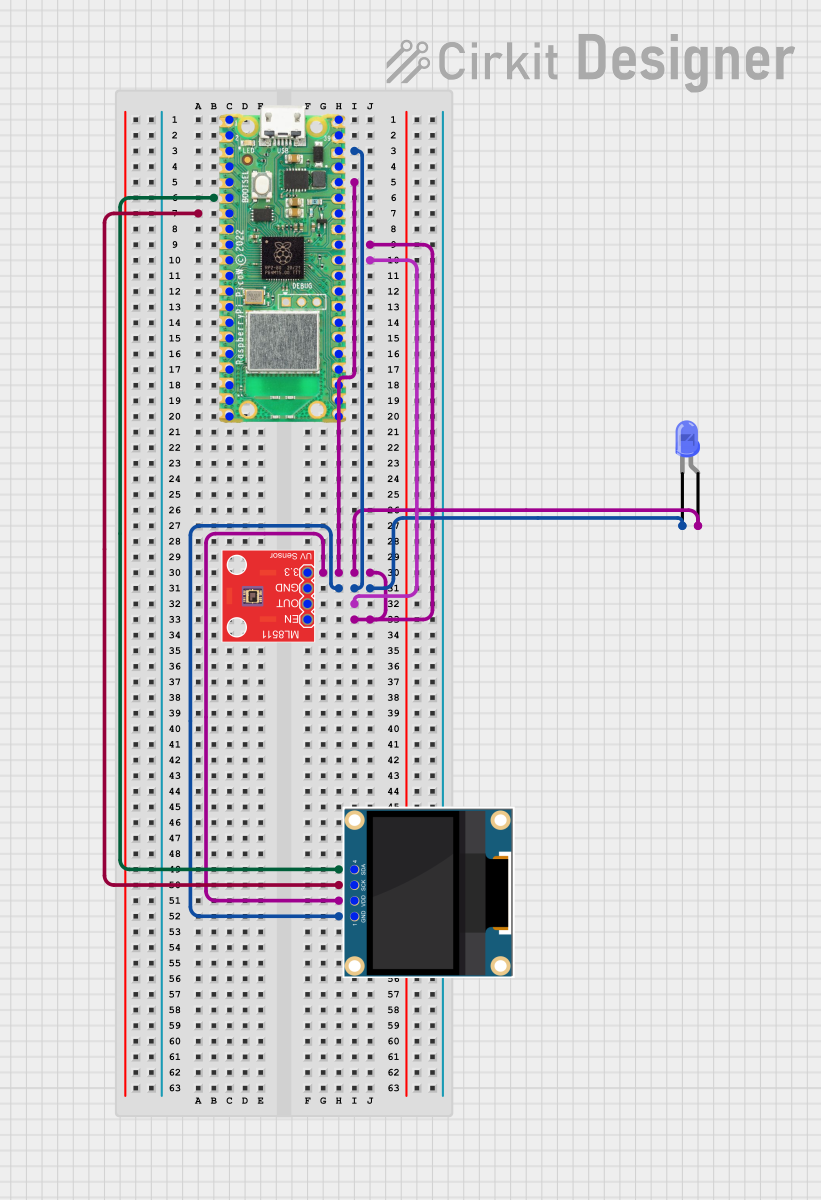
 Open Project in Cirkit Designer
Open Project in Cirkit Designer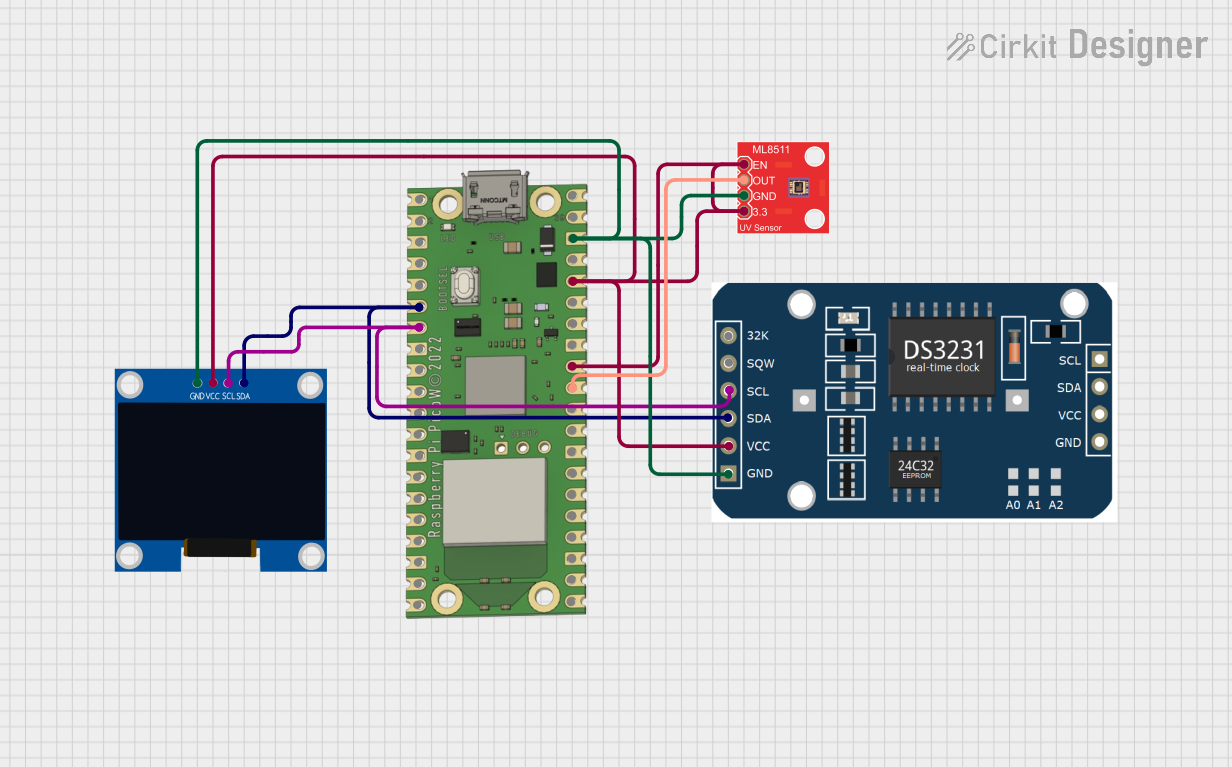
 Open Project in Cirkit Designer
Open Project in Cirkit Designer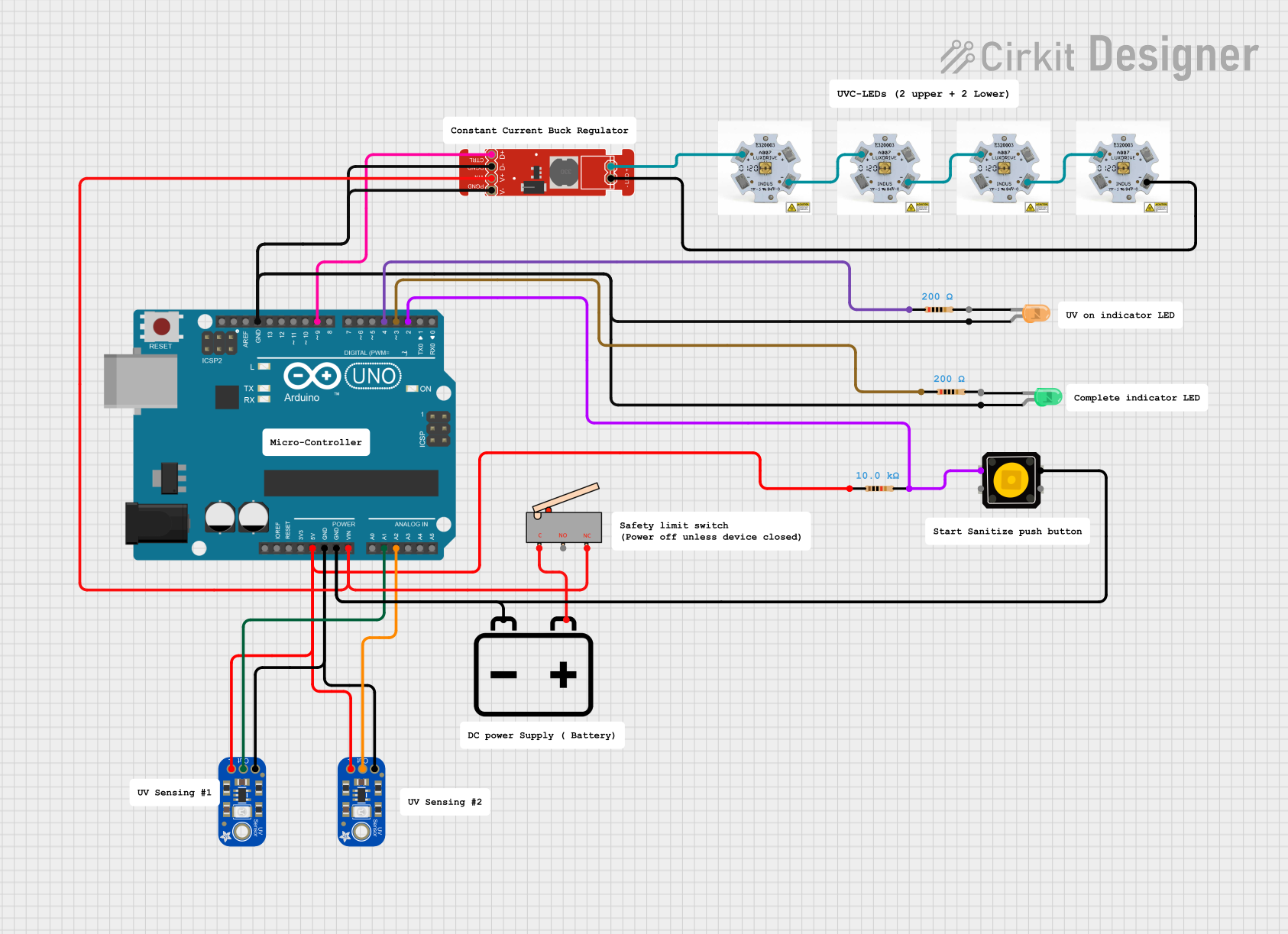
 Open Project in Cirkit Designer
Open Project in Cirkit DesignerExplore Projects Built with Adafruit VEML6075 UV Sensor Breakout

 Open Project in Cirkit Designer
Open Project in Cirkit Designer
 Open Project in Cirkit Designer
Open Project in Cirkit Designer
 Open Project in Cirkit Designer
Open Project in Cirkit Designer
 Open Project in Cirkit Designer
Open Project in Cirkit DesignerTechnical Specifications
Key Technical Details
- UV Wavelength Range: UVA (315-400 nm), UVB (280-315 nm)
- Interface: I2C (default I2C address: 0x10)
- Operating Voltage: 3.3V (Do not exceed 3.6V)
- Current Consumption: Typ. 480 μA
- Operating Temperature Range: -40°C to +85°C
Pin Configuration and Descriptions
| Pin Number | Pin Name | Description |
|---|---|---|
| 1 | VIN | Power supply (3.3V input) |
| 2 | GND | Ground |
| 3 | SDA | I2C Data line |
| 4 | SCL | I2C Clock line |
| 5 | - | No connection (NC) |
Usage Instructions
Integration with a Circuit
To use the VEML6075 UV Sensor with a microcontroller like the Arduino UNO, follow these steps:
- Connect the VIN pin to the 3.3V output on the Arduino.
- Connect the GND pin to one of the GND pins on the Arduino.
- Connect the SDA pin to the A4 pin (SDA) on the Arduino UNO.
- Connect the SCL pin to the A5 pin (SCL) on the Arduino UNO.
Best Practices
- Ensure that the power supply does not exceed 3.6V to prevent damage to the sensor.
- Use pull-up resistors on the I2C lines if they are not already present on the breakout board.
- Avoid exposing the sensor to direct sunlight for extended periods to prevent sensor degradation.
- Calibrate the sensor if accurate measurements are critical for your application.
Example Arduino Code
Below is an example code snippet for interfacing the VEML6075 with an Arduino UNO. This code initializes the sensor and reads the UVA and UVB values.
#include <Wire.h>
#include "Adafruit_VEML6075.h"
Adafruit_VEML6075 uv = Adafruit_VEML6075();
void setup() {
Serial.begin(115200);
while (!Serial) { delay(10); } // Wait for serial console to open
if (!uv.begin()) {
Serial.println("Failed to communicate with VEML6075 sensor, check wiring?");
while (1);
}
Serial.println("VEML6075 Found!");
}
void loop() {
Serial.print("UVA: "); Serial.println(uv.readUVA());
Serial.print("UVB: "); Serial.println(uv.readUVB());
Serial.print("UV Index: "); Serial.println(uv.readUVI());
delay(500);
}
Ensure that you have installed the Adafruit_VEML6075 library before uploading this code to your Arduino UNO.
Troubleshooting and FAQs
Common Issues
- Sensor not detected: Check the wiring, ensure that the SDA and SCL lines are connected correctly, and that the sensor is powered.
- Inaccurate readings: Make sure the sensor is not exposed to direct sunlight for calibration and that it is not covered by any objects.
Solutions and Tips
- I2C communication issues: Use a logic analyzer to check the I2C signals. Ensure pull-up resistors are in place if needed.
- Sensor calibration: Follow the calibration procedure outlined in the sensor's datasheet to adjust for offsets and gain.
FAQs
Q: Can the VEML6075 be used with 5V systems? A: The VEML6075 is a 3.3V device. Use a level shifter or voltage regulator when interfacing with 5V systems.
Q: How often should the sensor be calibrated? A: Calibration frequency depends on the application's accuracy requirements. For critical applications, calibrate the sensor before each use.
Q: Is the VEML6075 waterproof? A: No, the VEML6075 is not waterproof. Protect it from moisture and water exposure.
For further assistance, consult the Adafruit VEML6075 datasheet and the Adafruit support forums.